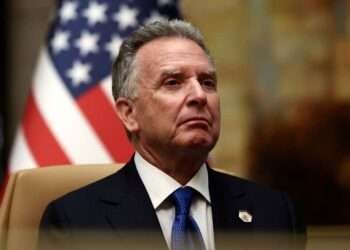The International Monetary Fund has retained its growth forecast for the sub-Saharan Africa (SSA) region at 3.4 per cent in 2021, and slightly adjusted upwards, the region’s 2022 GDP forecast by 0.1 per cent to 4.1 per cent.
Albeit, this growth projection agrees and is same as that of the World Bank for the region for 2021, whereas the 2022 projection slightly differs by 0.4 per cent.
Considering the IMF’s latest forecast for the region, the report stated that:
“The 2021 forecast for sub-Saharan Africa is unchanged relative to the April WEO, with an upgrade for South Africa following a strong positive surprise in the first quarter offset by downward revisions in other countries. The worsening pandemic developments in sub-Saharan Africa are expected to weigh on the region’s recovery.”
Moreover, the IMF projected the global economy to grow at 6.0 per cent in 2021 and slow down to 4.9 per cent in 2022, thus unchanged from the April 2021 forecast. Meanwhile, the IMF indicated that price pressures reflect the unusual pandemic-related developments and transitory supply-demand mismatches.
“Inflation is expected to return to its pre-pandemic ranges in most countries in 2022 once these disturbances work their way through prices, though uncertainty remains high. Elevated inflation is also expected in some emerging market and developing economies, related in part to high food prices.”
In its report, the IMF averred that about 95 million people are likely to fall below the extreme poverty threshold during 2020 – 2021.

“Higher debt service costs are also expected to constrain their ability to address social needs, including rising poverty and growing inequality, or to correct the setback in human capital accumulation during the crisis.”
Vaccine Access and Inequity remain a hurdle
The report also highlights that while economic prospects have diverged across countries since the April 2021 World Economic Outlook (WEO) forecast, “vaccine access has emerged as the principal fault line…” And it is not even assured that countries with very low infections will continue to experience robust recoveries as long as the virus circulates elsewhere, the IMF indicated.
As a result, the IMF called for multilateral action in order to diminish divergences and strengthening global prospects. The IMF reiterated its Staff Proposal of US$50 billion, which is jointly endorsed by the World Health Organization, World Trade Organization, and World Bank, to end the pandemic.
Also, the IMF advocates that financially constrained economies need unimpeded access to international liquidity. Thus, the proposed US$650 billion General Allocation of Special Drawing Rights at the IMF is set to boost reserve assets of all economies and help ease liquidity constraints. Furthermore, countries need to redouble collective efforts to reduce greenhouse gas emissions.
“These multilateral actions can be reinforced by national-level policies tailored to the stage of the crisis that help catalyze a sustainable, inclusive recovery.”
The report stressed that concerted, well-directed policies can make the difference between a future of durable recoveries for all economies or one with widening fault lines—as many struggle with the health crisis while a handful see conditions normalize, albeit with the constant threat of renewed flare-ups.
READ ALSO: Average lending rate down by 0.36% in first 6 months of 2021























